Shahria Sharmin’s photo project on hijra, or third-gender, communities in Bangladesh and India explores femininity, family rejection, and sexual taboos.
Shahria Sharmin’s debut project, “Call Me Heena,” is an intimate portrayal of hijra communities in Bangladesh and India. Hijra is a term used in South Asia for an officially recognized third gender, and hijras are often male-to-female transgender or intersex.
“Call Me Heena” explores sex and gender taboos, femininity, and family relationships in hijra communities. R&K’s Irene Jiang spoke to the Bangladeshi photographer about how her experience as a mother preparing for separation from her college-bound daughters inspired her to seek out parents who abandoned or estranged themselves from their hijra children.
Irene Jiang: How did you meet Heena and start this photo project?
Shahria Sharmin: For my photography school project, I was assigned to work in a garment factory. I met four hijras there and started talking with them as garment workers but eventually, I became more interested in their personal lives. I thought, why don’t I take pictures of their emotions and their feelings of femininity? Though the project is named after Heena, it’s a story about the whole transgender community.
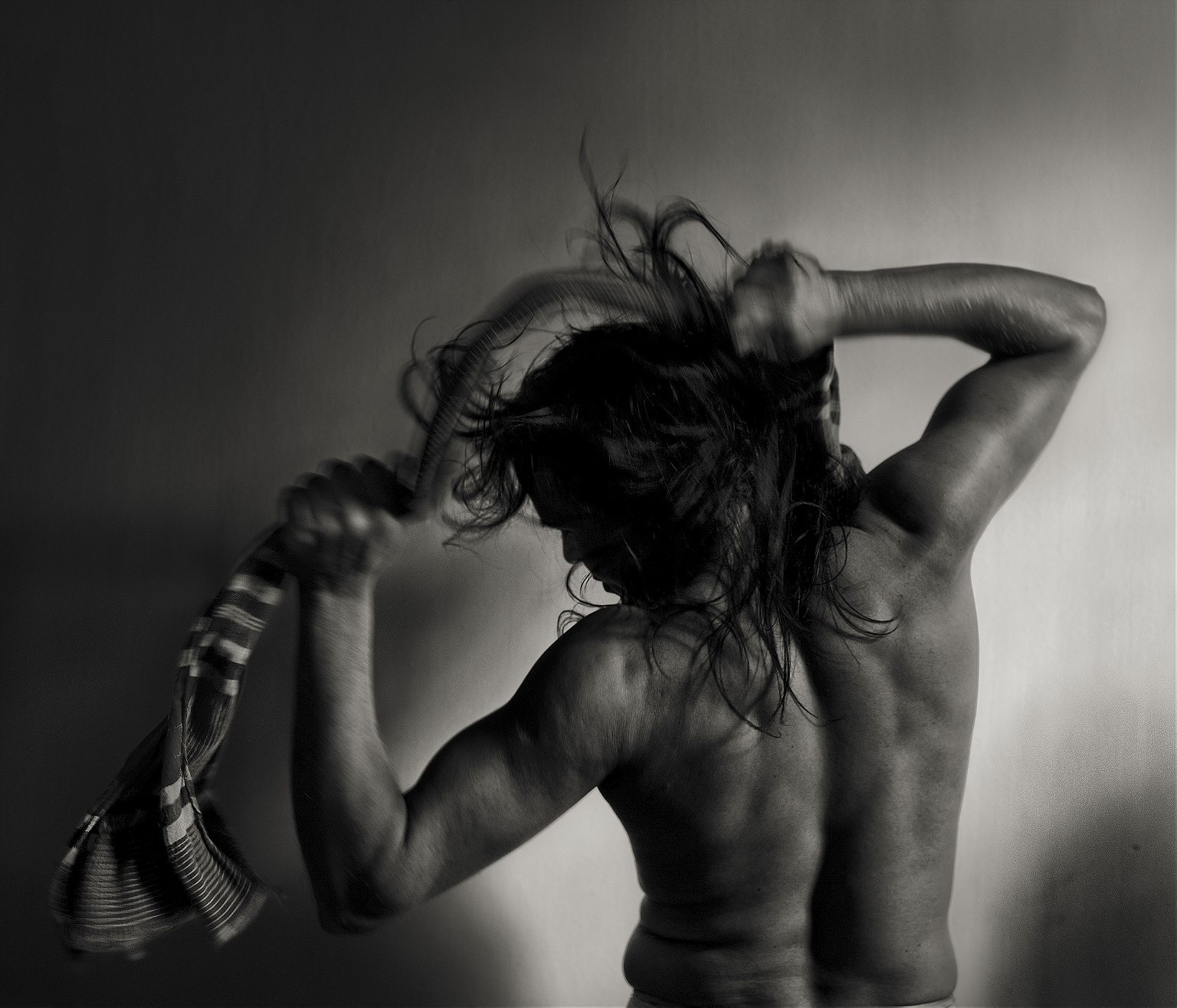
Jiang: You mentioned on your website that you had some preconceived notions about hijras before you started this project. Could you tell me a little bit more about those?
Sharmin: Being a woman in an [officially] Muslim country—I wouldn’t say my family was restrictive—I just knew that there were two genders, male and female. We had taboos around sexuality. When I started doing photography and I met [hijras], they introduced me to their sexuality, among other things. I have certainly grown as a result of spending time with them.
Jiang: What are some of the challenges that hijras face in Bangladesh?
Sharmin: People accept them as hijras, but they are not part of mainstream society. They have their own communities. There is a guru system. Every area has a guru and under the guru, they’re in a house. Each house has its own way of earning money. Some houses earn money through prostitution. They give the money to the guru. Half of the money the guru keeps, and the rest the guru distributes to them.
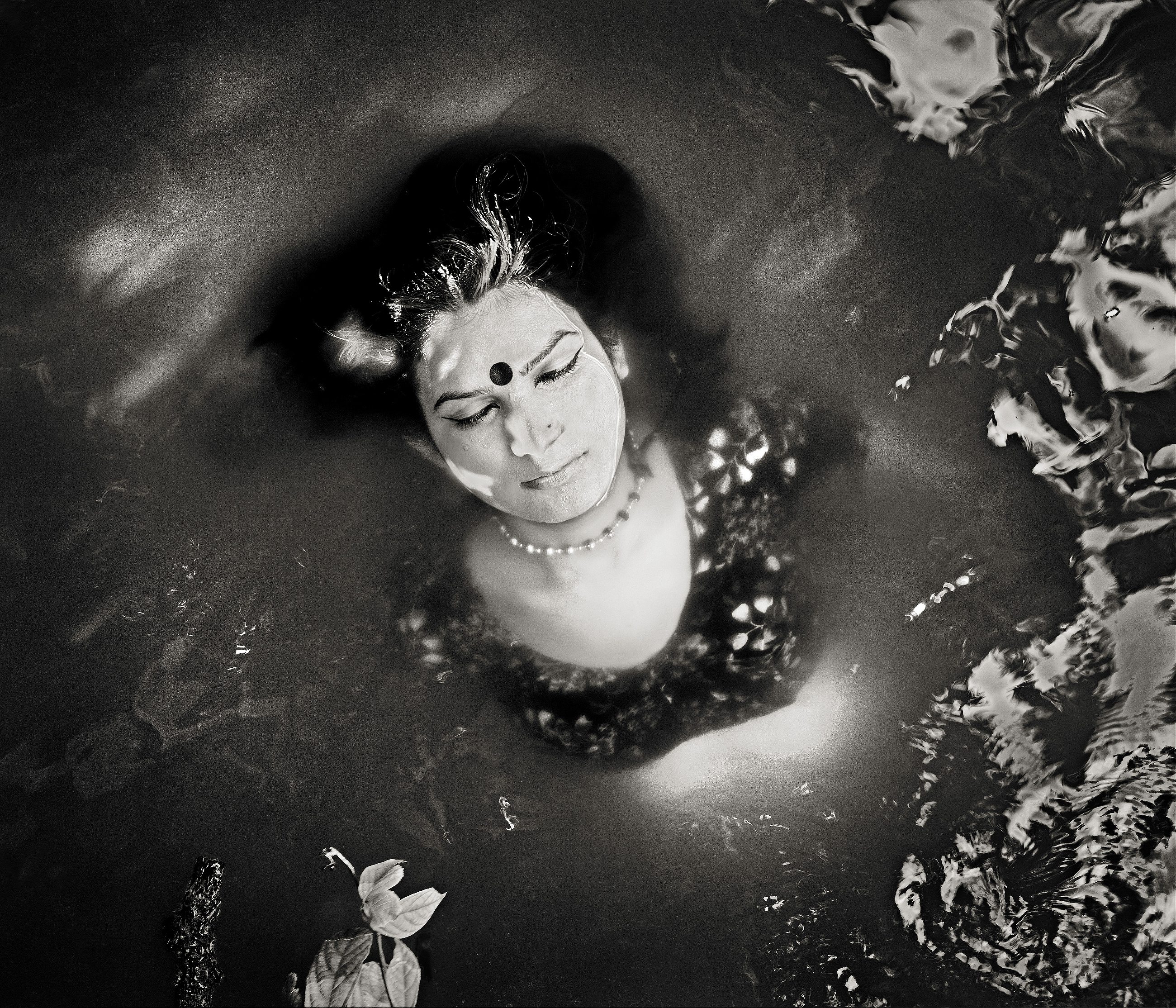
Jiang: Your portraits are very intimate. How did people react when you asked to photograph them and how did you build those relationships?
Sharmin: Initially, it was very difficult to take pictures. They didn’t trust me. Gaining trust takes time. You have to prove that you’re not trying to exploit them, but that you want to be a part of their life and you want to give them dignity through your pictures.
I got a grant from the Alexia Foundation to follow and to take pictures of the hijras that migrated from Bangladesh to India. My intention was to know why they migrated. I stayed with them in their brothels and with their families in their homes for months.
If you want to go to their homes you have to ask their guru first. You have to ask for permission and convince her of why you want to take pictures.
Relationship building takes lots of time. You spend time with them and make them comfortable and make yourself comfortable too. I conduct interviews and then out of 10 or 15 subjects, I pick someone whose story is more interesting. Then I take her picture.
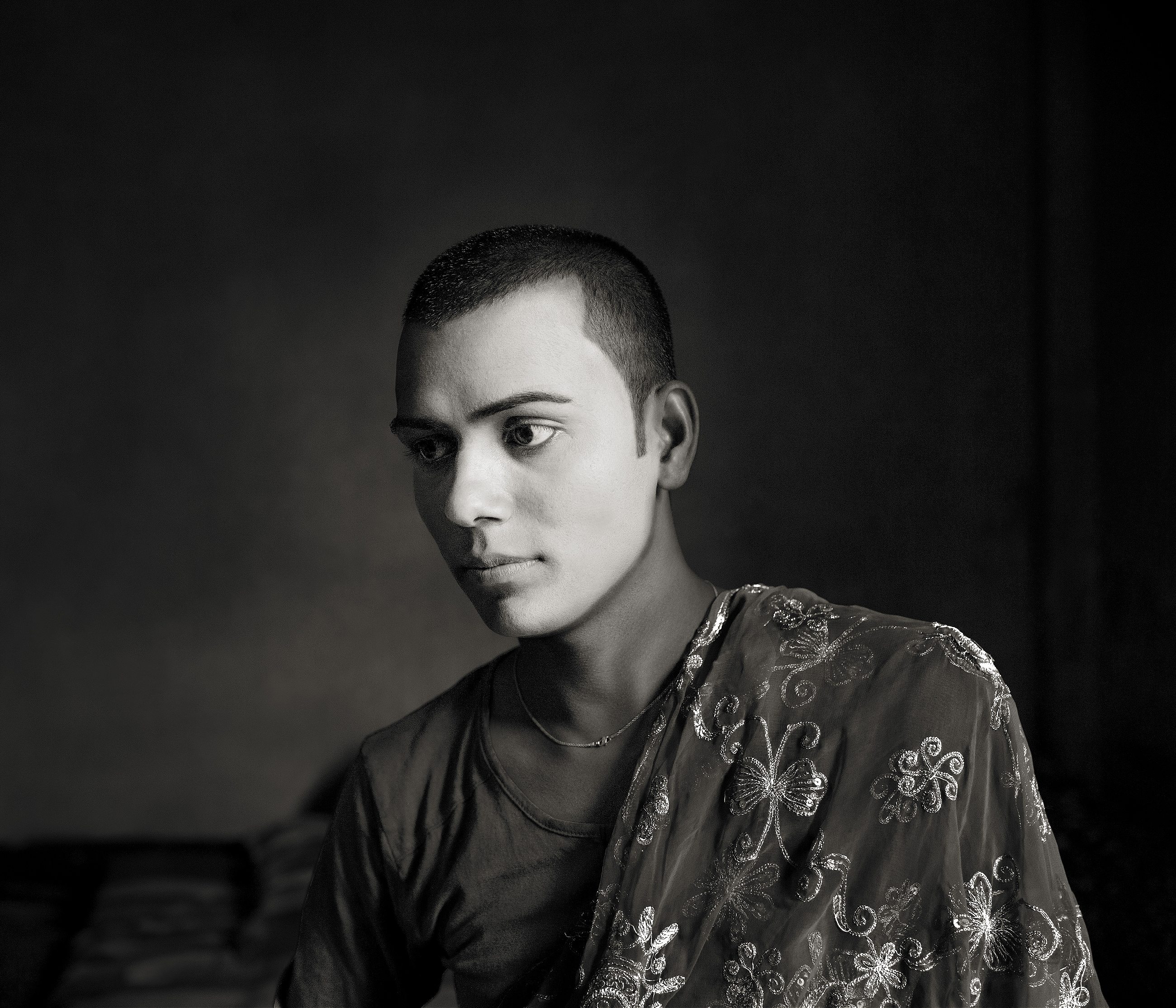
Jiang: Some of your portraits are in the style of old family photos. Why did you choose that style?
Sharmin: I’m the mother of twin daughters, and they’re 19 now, in undergrad. When they were in grade 11, I decided to make a dark room at home so I could spend time with them and at the same time continue practicing [photography].
At that time, I was in a transition [period] where my daughters were about to leave me, and I was just thinking about how the parents of hijras abandoned their children. I was suffering because my daughters were going to leave. At that moment I thought, I should ask [the parents] questions. So I traveled throughout the country and interviewed their families.
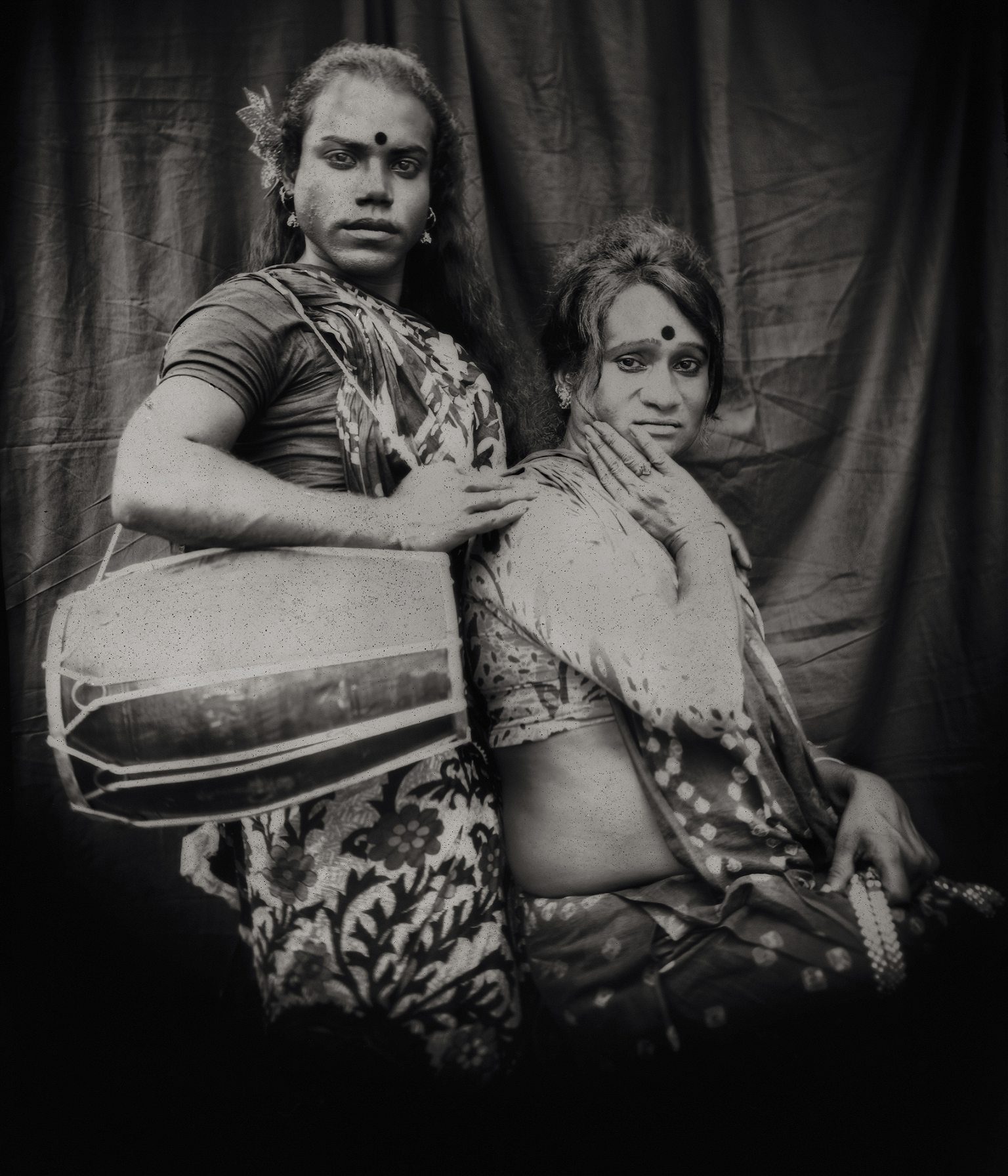
Jiang: What did the families say?
Sharmin: One of the fathers said, “Society comes first because I can’t live without society. I have to go to the mosque. I have to go to my neighbors. If I sacrifice one child, then I can live with others.”
In most cases, the mothers are more flexible than the fathers are. Sometimes the father doesn’t know, but the mother keeps communicating with their children through phone or letters. But the father doesn’t want to see his son as a daughter. The son has to be the son.
For fathers, accepting their son as a daughter is very difficult unless the son or the daughter provides financial support to the family. Then it’s an exception. Okay, you can stay with us or I can still maintain a relationship with you because I’m dependent on your money.
In most cases, children feel when they’re a teen that they don’t belong to this society
Jiang: At what point in their child’s life do these parents make the decision to leave their children with gurus?
Sharmin: In most cases, children feel when they’re a teen that they don’t belong to this society. They want to go to hijra society because they want to have the freedom to live and dress how they want. Only at the gurus can they have that freedom, so they choose to leave home. In other cases, the father thinks that their child is going to be hijra because of their body language and how they mix with other children in class or something like that. In four or five cases, I’ve seen the father or the brother bring their child to the guru. They say, “This is your daughter, not mine, because she doesn’t belong to my society.”
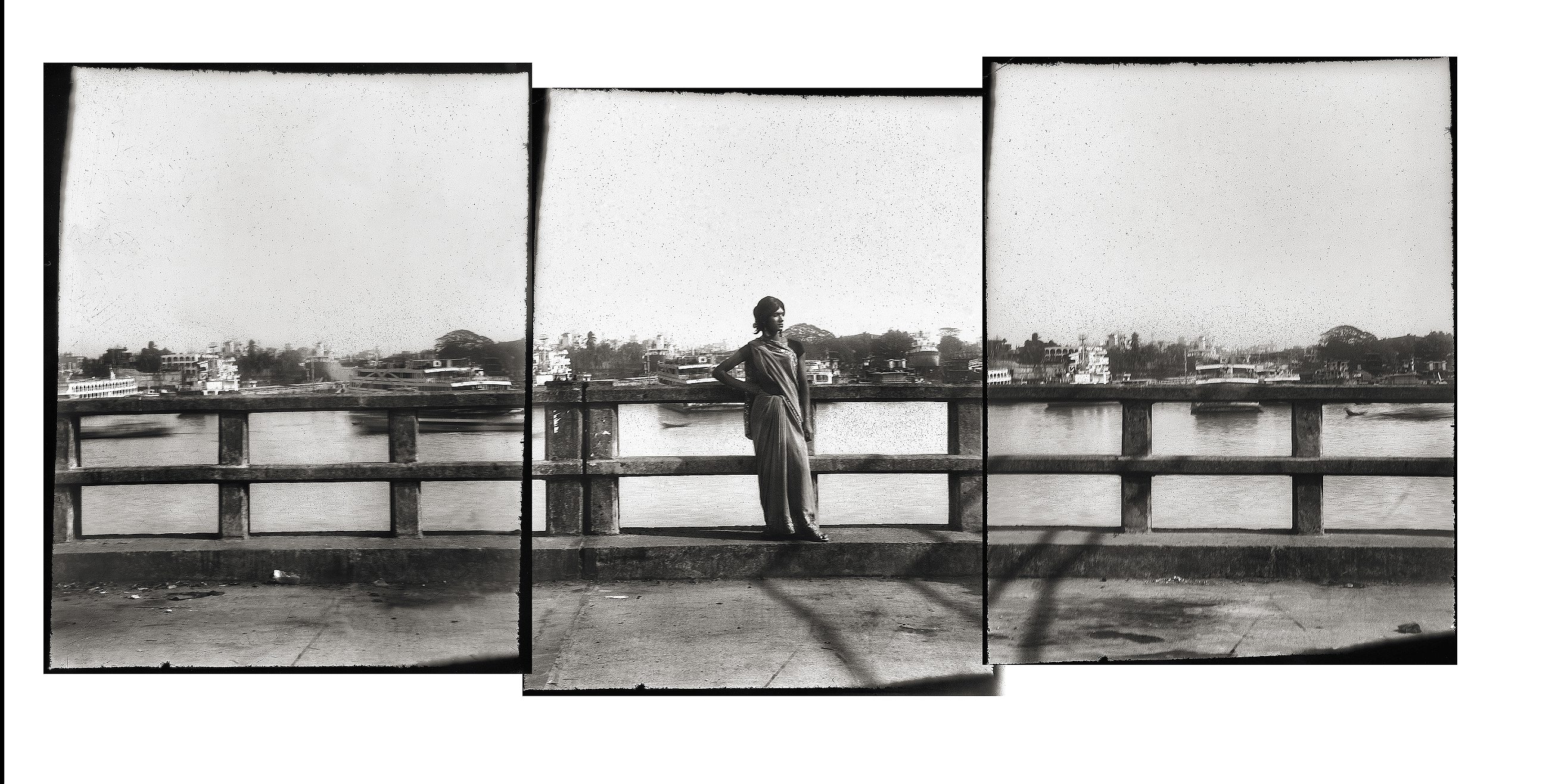
Jiang: How did your friends and family react when you started working on this project?
Sharmin: My husband and my daughters were extremely supportive. My daughters were 12 or 13 at that time, so I shared everything with my family at the dinner table every day. I thought, it’s not just me on this journey. If I want to grow, I want to grow with my children. So I shared everything with them.
But my parents were not as flexible until they saw my pictures in the exhibition hall. I had done my Masters, my banking career, and everything. They always said you have to get married, you have to have children, you have to do your Masters [degree] and everything. I did everything, so now it’s my turn to do the thing that I want.
Jiang: The hijras that you spent time with—what are their hopes for the future?
Sharmin: They want to work within mainstream society, but they want to dress the way they want. In the factory they’re not allowed to wear female clothes, they have to wear male clothes.
I asked the factory manager, why don’t you allow them to dress the way they want? He said, “If I allow them [to dress the way they want], the other workers will not work. They will look at them, they will tease them, they will make fun of them. They will be a disturbance on the factory floor because we count not minutes, but seconds on a floor.”
They want to sing, they want to wear a sari, they want to do makeup, they want to wear jewelry, and they also want to work. But the factory environment will not allow them to do that.
This interview has been condensed and edited for clarity.